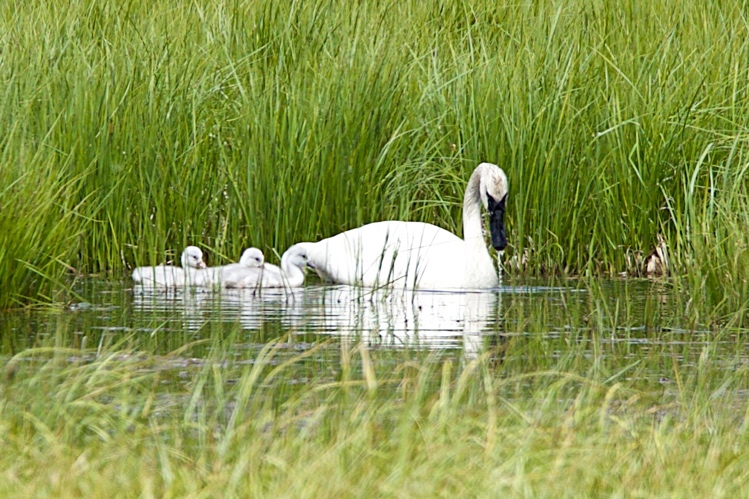Article by Mary VanFleet
Photo by Jean Bjerke
Trumpeter Swans (TS) have historically nested at Henrys Lake, but have not been breeding there much of the last 50 yrs. Historically widespread in the US, by the 1900’s there only remained a small remnant population of about 50 adult non-migrating birds in Montana, Idaho, and Wyoming, the result of skin trade and over-harvesting.
Conservation efforts increased their numbers to about 1600 adults in the early 60s but overcrowding and disease caused huge setbacks due to a winter feeding program at RRLNWR. By 1968 it was terminated.
Today, the population is still limited to spring-fed waters in this Tri-State area. SE Idaho has roughly 20 nesting pairs of TS throughout Island Park and its surroundings.
Migration for Trumpeters in this region is short- they take the closest open waters overwintering- the Henrys Fork. You’ll observe many TS on the Fork during winter. Birds from Alberta come into Henrys as a stopover to the Fork. You also see migrants on Henrys during spring and fall as they also stop over to or from summering in RRLNWR or Alberta.
In the past 7 years, Henrys has had a new mating pair of Trumpeters. Our pair first courted as juveniles in 2016 at Henrys near State Park. The following year they came back, raising one cygnet (chick) which ultimately broke a flight wing. In 2019, they were successful with three cygnets that fledged (took fall flight). This was the first successful fledging of cygnets in 40 years at Henry’s! In 2020, we observed 3 cygnets but believe only 2 fledged. In 2021, again our pair had 4 cygnets going into fall.

This is a welcome addition to the population of TS in Island Park. TS needs a sizeable pond to have an adequate “runway” for running atop the water to take off. They mate for life, are very prone to human disturbance, and require adequate space and privacy to breed safely from predators. Few places in SE Idaho provide suitable habitats. Juvenile cygnets look for mates and begin breeding between 3-5 yrs of age. Adult birds usually breed annually and continue for many years. Be respectful and keep your distance, never attempt to approach or feed them.
Mary lives in Island Park and is an active board member with HFWA and Henrys Lake Foundation.
